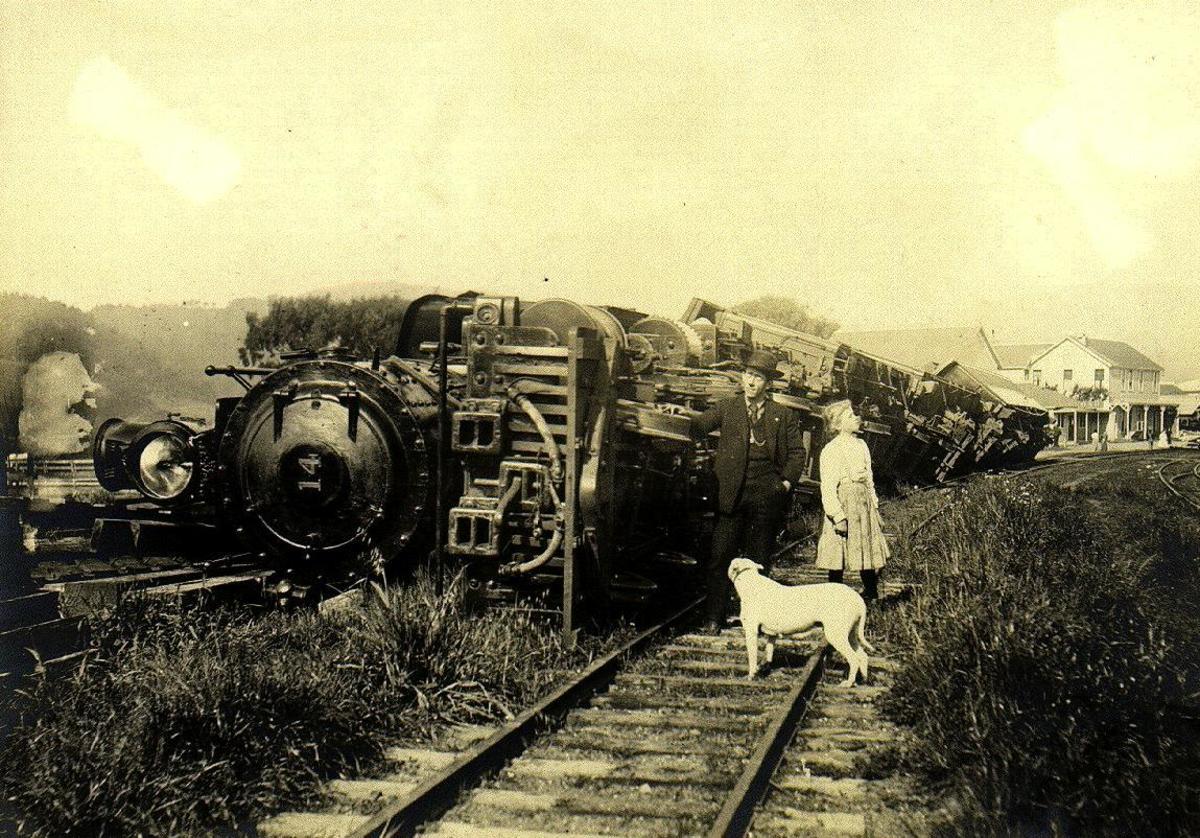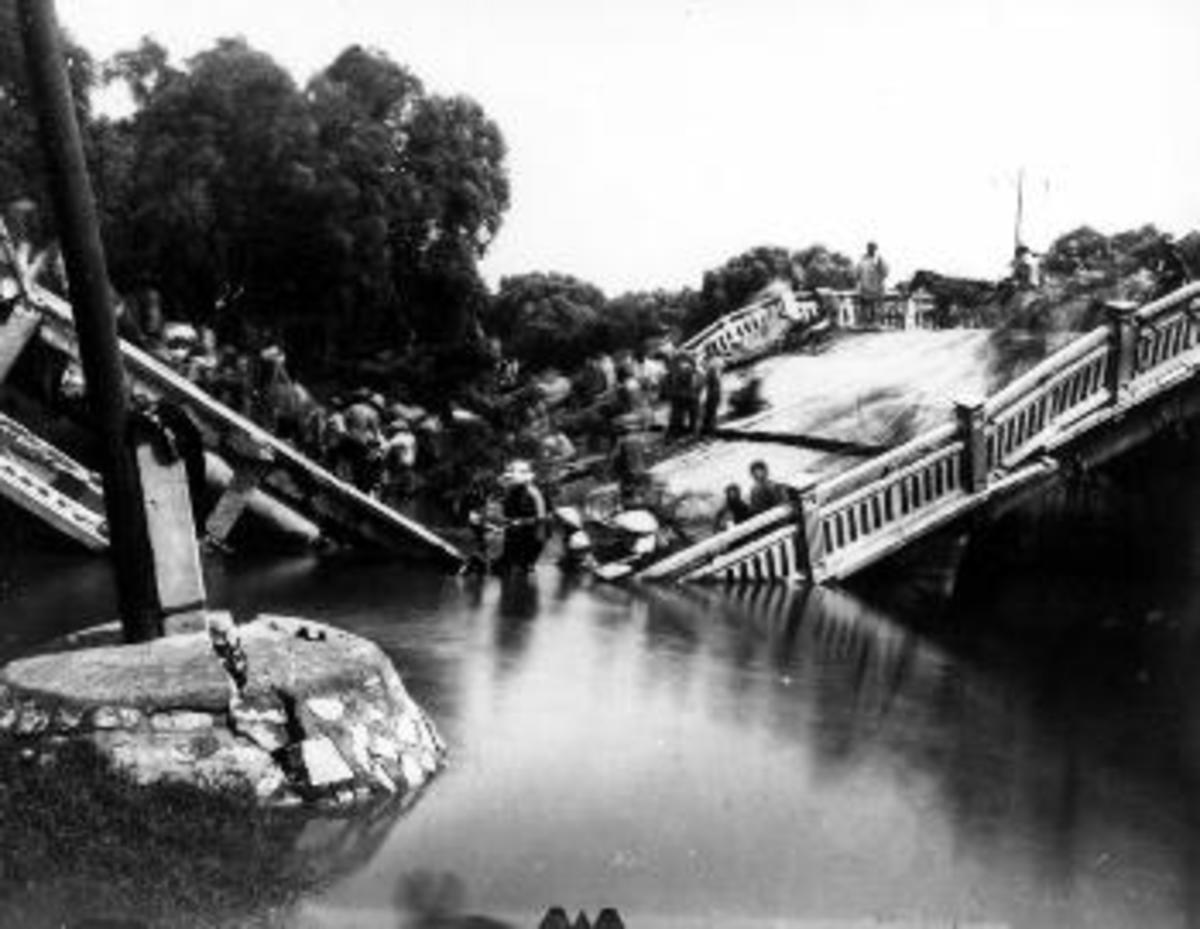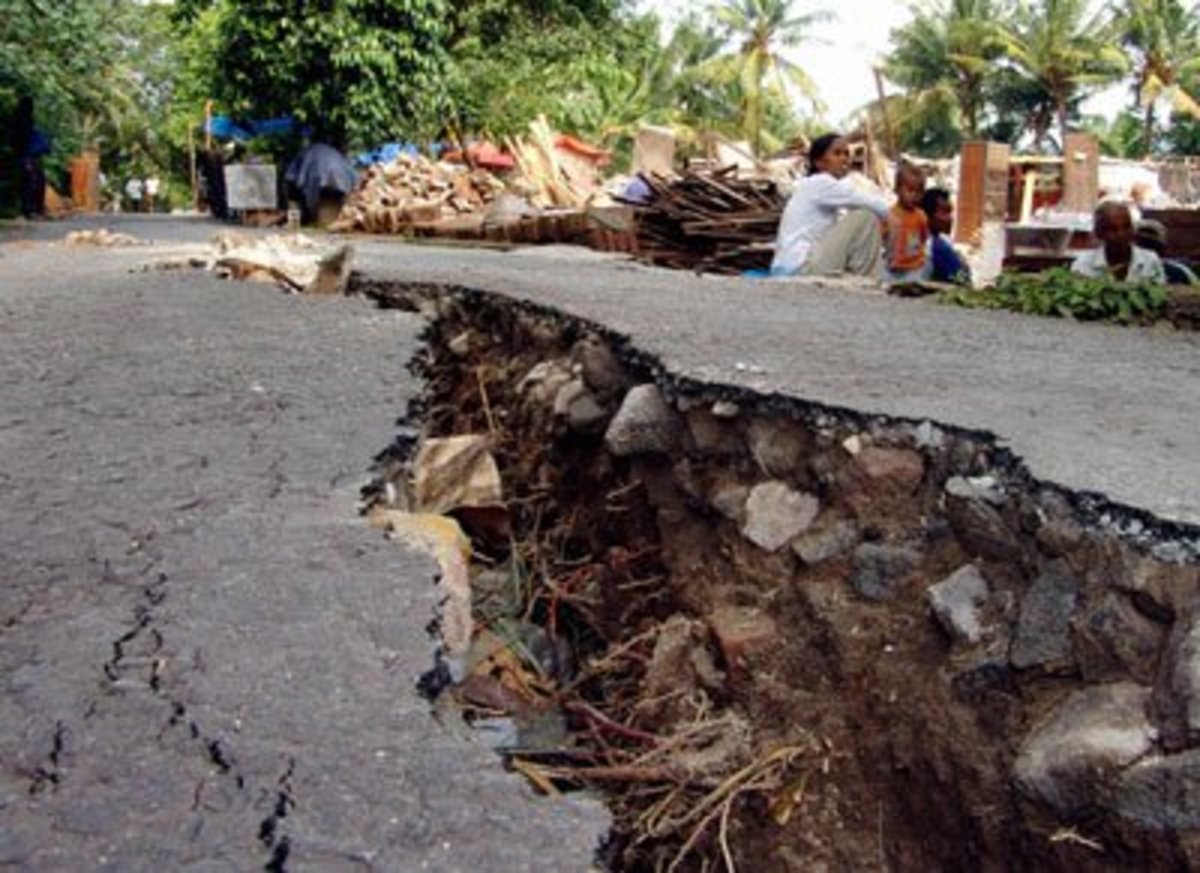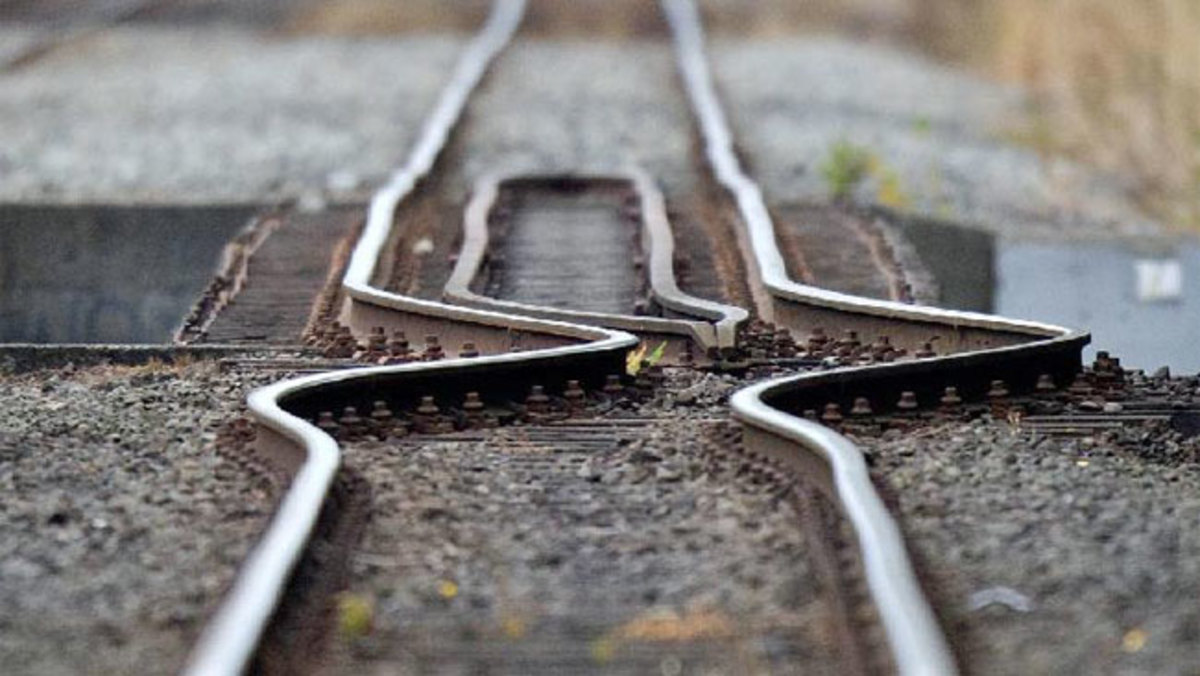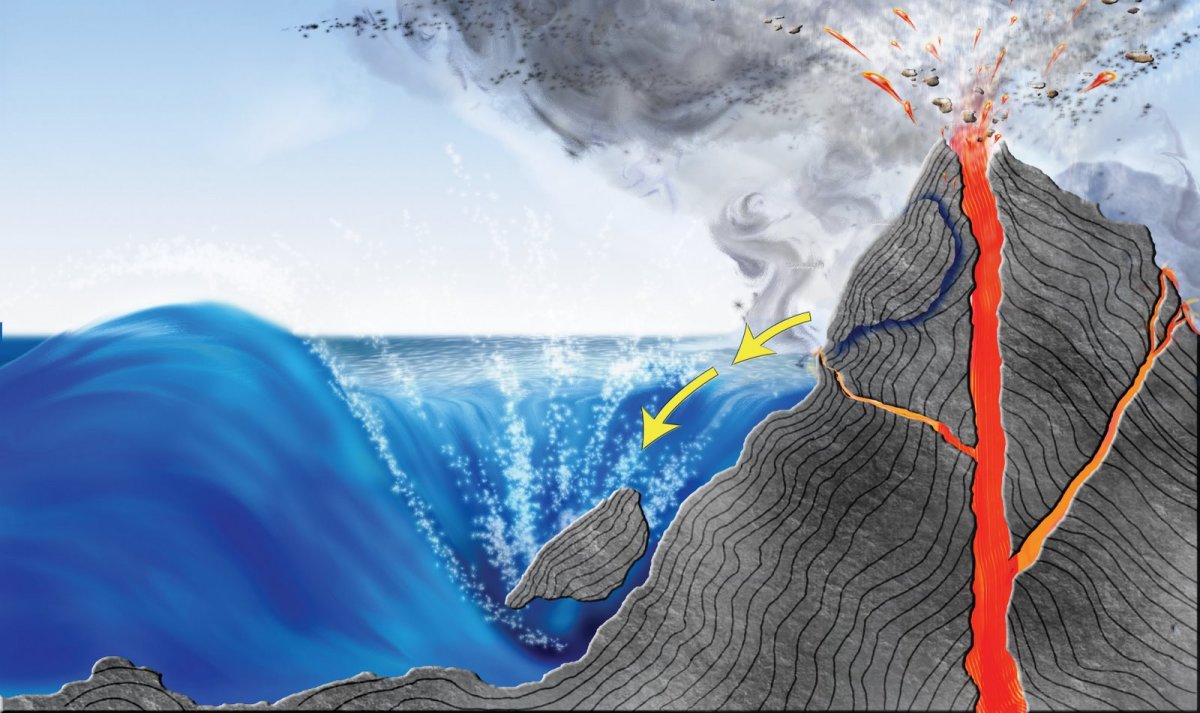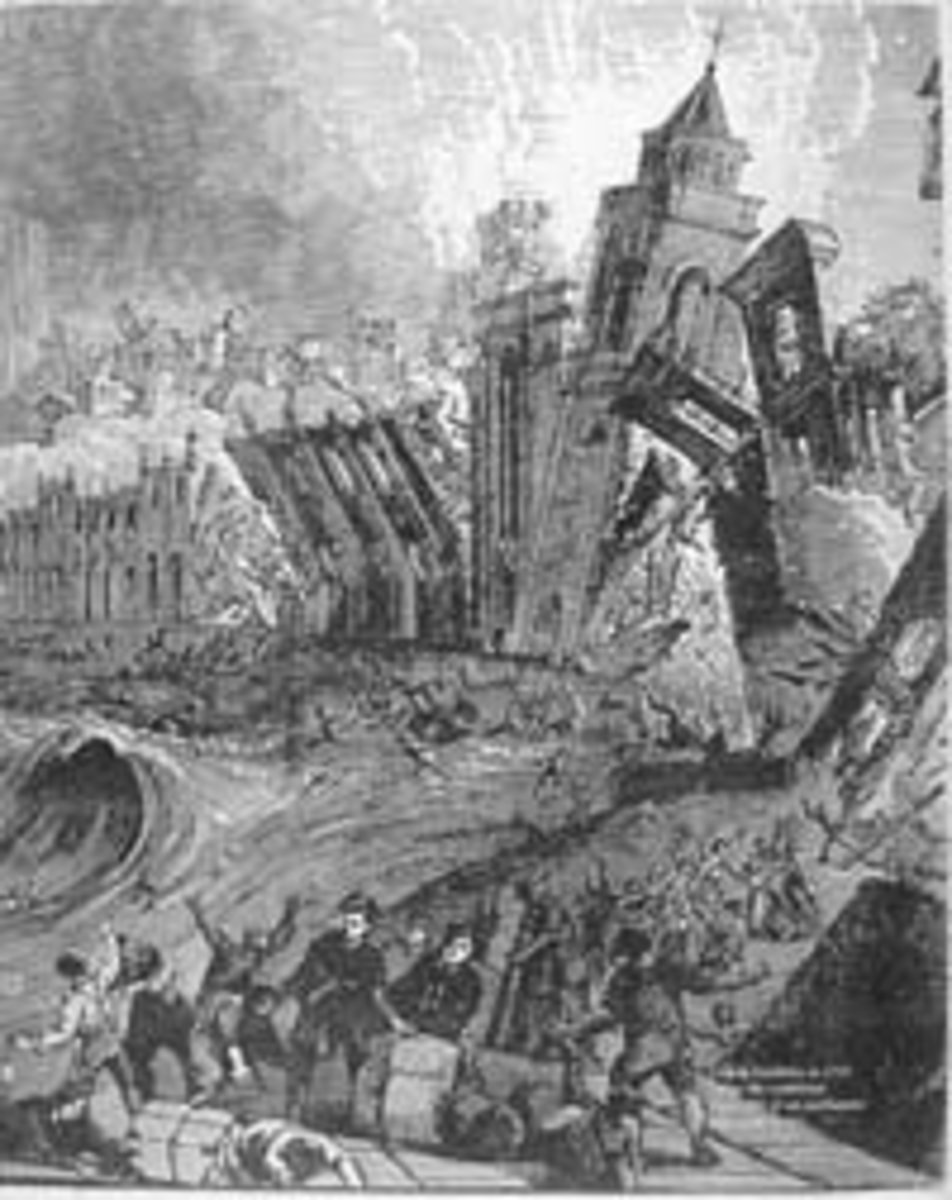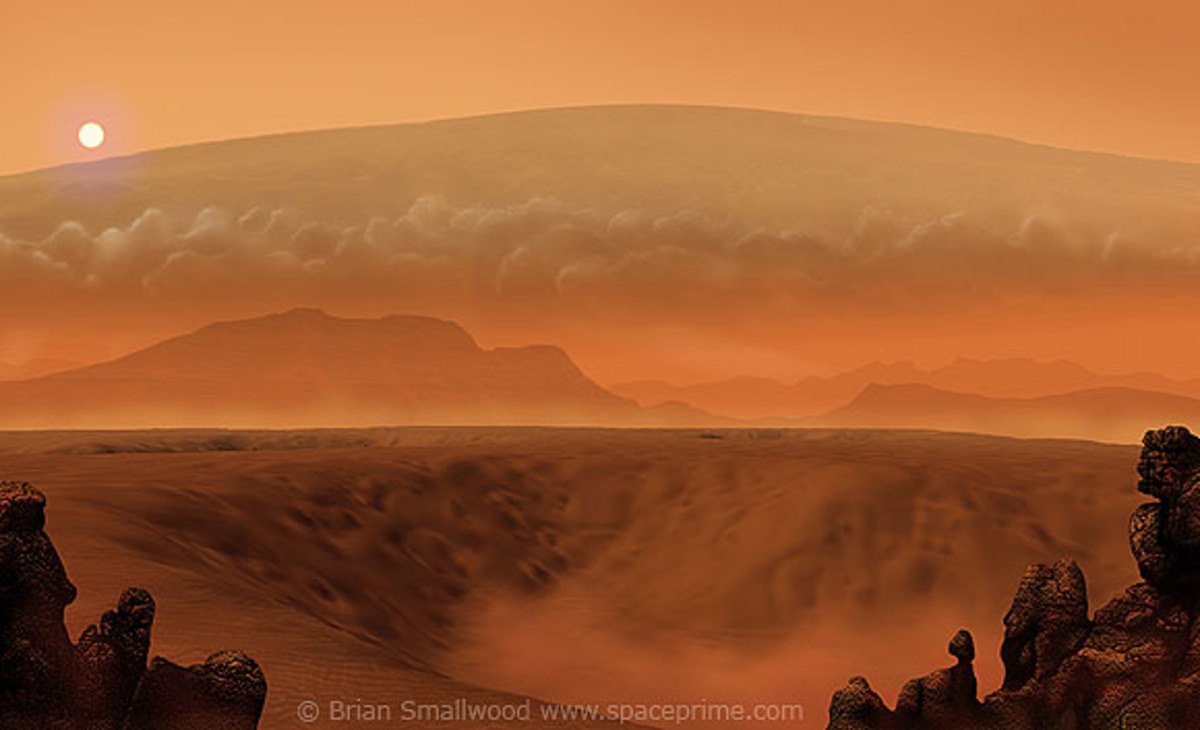Earthquakes, Tsunamis, Aftershocks, Whirlpools and Vortexes-Explanation of Earthquakes
Earthquakes
- earthquakes are caused by the movement of the earth’s tectonic plates (broken pieces of the earth’s crust)
- tectonic plates are in constant motion, moving past each other, towards each other, and away from each other., and when they can’t pressure builds up, causing vibrations and tremors.
- earthquakes occur without warning, and at anytime of the day or night
- the Richter scale was developed in 1935 by Charles Richter to measure the energy released by the focus of an earthquake using seismograph
- the Mercalli scale measures the physical effects of an earthquake by the Mercalli Intensity Rating of the Roman numerals I-XII. As an example Mercalli Intensity IV would be the equivalent feeling of a freight train passing through. A rating of X would show many structures and buildings collapsing.
- the epicenter is the point above where the vibrations radiate in all directions, causing great destruction. The closer to the epicenter, the stronger the earthquake.
- earthquake vibrations travel very fast and can reach the other end of the world within 20 minutes.
Electromagnetic Light Phenomena Before an Earthquake
- there are hundreds of tiny earthquakes constantly going on underneath the earth that are never felt
- faults are the boundary of any two plates.
- magnitude is the energy the earthquake releases and measures the severity of the quake. A magnitude of 2.0 or lower is usually not even felt by people and called micro earthquakes
- each year there are thousands of 4.5 and higher earthquakes around the globe and classified as moderate quakes
- great earthquakes have a magnitude of 8.0 and greater. They are very powerful
- for each unit of increased magnitude there is a 30 times increase in energy.
- an 8.6 magnitude earthquake can release energy that equals 10,000 atomic bombs.
- earthquakes can cause a volcanic eruption from a previously inactive volcano.
- earthquakes can cause landslides
- an electromagnetic light phenomenom occurs in the sky shortly before and sometimes during big earthquakes. Scientists are still studing the reason this occurs.
- 80% of the earthquakes that have been recorded, take place in the Pacific Rim, New Guinea, New Zealand, Japan, South America, U.S.A., and Canada
The Earthquake in Japan
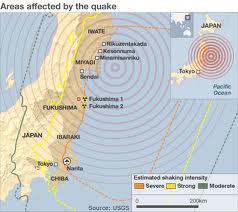
Japan's Earthquake Seen from Space
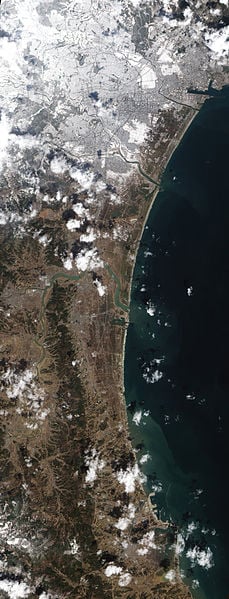
What will someone experience with different earthquake magnitudes?
3.4 or less magnitude
Usually noticed by a few people near the epicentre.
3.5 - 4.2 magnitude
Felt by those indoors and some outdoors; vibrations similar to a passing truck.
4.3 - 4.8 magnitude
Many will feel this - windows rattle, dishes shake, cars standing still will rock.
4.9 - 5.4 magnitude
Everyone feels this shaking - everything moves dishes will fall and break and doors swing open, things will overturn
5.5 - 6.1 magnitude
Buildings may suffer damage - walls will cracks, bricks tumble, chimneys are damaged.
6.2 - 6.9 magnitude
Major building damage - houses can move from their foundations, major shaking causes furniture to move, chimneys will fall
7.0 - 7.3 magnitude
Serious damage to buildings - bridges swing and twist, walls break open, some buildings can collapse.
7.4 - 7.9 magnitude
Causes extensive damage - most buildings collapse.
greater than 8.0 magnitude
Devasting damage to the area - depending on how structures were built to withstand earthquakes, many will be reduce to rubble, tsunamis, landslides, volcanic eruptions and serious aftershocks will occur
See Earthquake Simulations From 4.0 to 9.0
Ariel View of Tsunami Damage
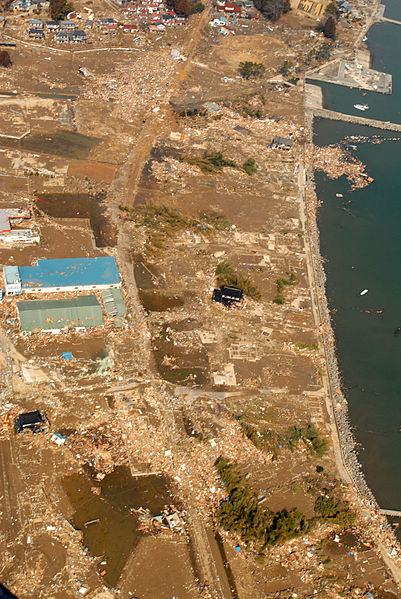
Tsunamis and Earthquakes
Tsunamis are the effect of the tectonic plates colliding under the ocean.
A Tsunami occurs because the waves are traveling so fast and as the water reaches shallower land, the bottom of the water is slowing down, but the top of the wave is not. Now the top of the wave is higher than the bottom of the ocean forcing a wall of water on land.
- tsunami is a Japanese word, translated means "harbor wave."
- tsunamis are sometimes called tidal waves, but they are different because tsunamis are not related to the tides. A tidal wave will occur from a high tide occurring when there is a gravitational force from the moon, sun, and planets.
- there are 3 phases to a tsunami: generation (sea surface reshapes from the earthquake), propagation (seismic energy is transported from earthquake source as deep waves form), runup (the most destructive phase as it comes ashore)
- tsunamis can occasionally be triggered by a meteorite crashing into the sea, or from a major landslide, or from a volcanic eruption.
- tsunamis are often generated from an earthquake
- the force of energy from the earthquake at the floor of the ocean causes a series of waves that travel through the ocean.
- tsunami waves travel over 500 miles per hour (800 kilometers/hour)
- these waves are as high as the ocean is deep
- as the tsunami gets closer to land, the shallow water makes the waves go up higher
- as the ocean floor rises gradually, the wave becomes more powerful and can move miles inland, destroying everything that is in its path.
- tsunamis are underwater earthquakes. When they happen in the middle of the ocean where the water is very deep, the waves may be a few feet higher, but when the waves get to land, they can be 200 feet high due to the shallow depths of water. The only place the water can go is up, as it nears land.
- a Tsumani is made up of many waves known as a wave train.
- the most destructive wave is not always from the first wave.
- tsunami waves can be spaced as far as 1 hour apart and be as long as 100 kilometers or 60 miles long. They can cross a whole ocean without losing much energy.
- tsunamis may not be noticed by those sailing on the ocean because the waves can be less than one foot high (30 centimeters) on the ocean surface in deep waters
- the tsunami, once on land has such enormous energy, it destroys whatever is in its path, knocking demolishing buildings, washing away people, cars, homes, and even changing the coastline.
- the tsunami is most similar to an extremely fast rising tide accompanied by violent underwater turbulence.
- a tsunami has been described that it sounds like a freight train coming.
- most tsunamis occur in the Pacific, but can occur in the Mediterranean and Caribbean Seas. Some have even occurred in the Atlantic and Indian Oceans
- very often there will be a noticeable rise or fall in the level of the water. Water can recede from the shore as much as 5 minutes before the tsunami arrives.
- tsunami waves can last for hours after the first wave, and the first of the waves may not be the most dangerous.
- tsunamis can travel along rivers and streams as it gets to the ocean and can cause unpredictable water levels and dangerous currents in ports and harbors.
- sensitive recorders have been put on the ocean floor to measure pressure changes in the water overhead, which sends the data to buoys in the ocean, which relay the information to satellites to help predict tsunamis.
- 26 countries are part of TWS (The Pacific Tsunami Warning System) to monitor seismic activity for earthquakes that may trigger a tsunami.
Live Video of Tsunami in Japan
Waves Go Higher Than Houses
Measuring Foreshocks, Mainshocks, and Aftershocks
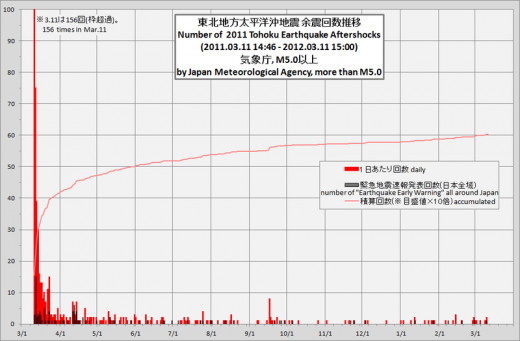
Foreshocks, Mainshocks, and Aftershocks
- foreshocks are smaller earthquakes that come before the bigger quake. Not all main shocks have foreshocks.
- aftershocks are earthquakes that are no further from the main shock than the length of the fault.
- aftershocks occur in areas around the fault relieving stress
- aftershocks occur in the same area as the main shock
- by itself there is no way to differentiate between a main shock and a foreshock or an aftershock.
- the main shock is always the earthquake with the highest magnitude
- the aftershocks are unpredictable and random, but aftershocks follow a predictable declining pattern correlating with time, distance and magnitude
- afteshocks can continue for months or even years after an earthquake has occurred.
- the bigger the earthquake the larger the aftershocks
- there are 3 mathematical calculations used to predict the size of the aftershocks
- aftershocks can be as big as 1 less magnitude than the main shock
- aftershocks can produce landslides, causing the weakened land to slip and buildings can collapse that have already been damaged by the main shock.
- time is an important factor with aftershocks - there are could be many aftershocks within the first hour of the earthquake and they decrease proportionately to the time since the main shock happened.
- there are more smaller aftershocks than larger ones
Tsunami Travel Times
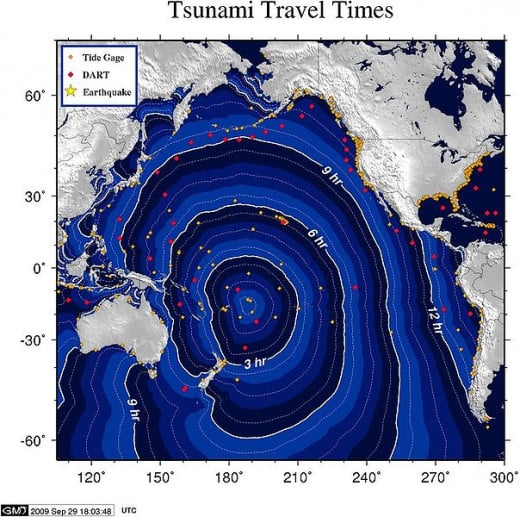
Tsunamis Can Cause Whirlpools and Vortexes
Whirlpools and Vortexes in the Ocean
Whirlpool comes from a Dutch word that means whirling stream.
- whirlpools are currents in the ocean that rotate in a circular directions and create rising and falling tides
- after a tsunami the water drains quickly, like pulling the plug in a bathtub, as the waves recede the water spins and creates the whirlpool affect
- a vortex can form when these rising and falling tides create a downward pull
- most whirlpools are not very powerful
- a powerful whirlpool is called a maelstrom
- small whirlpools can be seen at the bottom of most waterfalls, Niagra Falls, being a large waterfall would have a strong whirlpool

